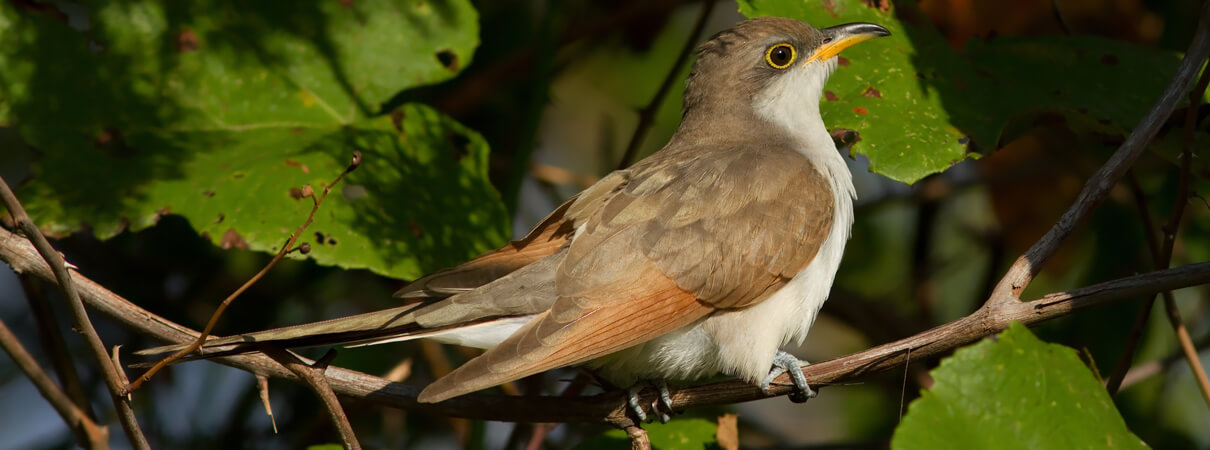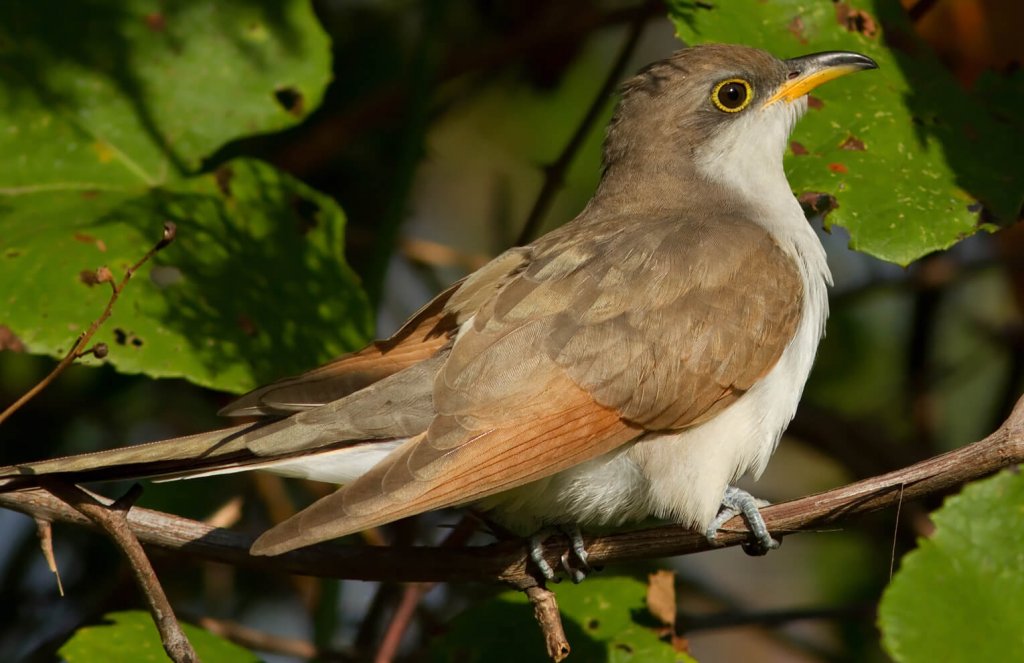 These slender, elusive birds slip easily through the trees on long, pointed wings. Like other cuckoos, they have two forward-facing toes and two backward-facing toes—an arrangement most common in birds that climb tree trunks or clamber through foliage.
These slender, elusive birds slip easily through the trees on long, pointed wings. Like other cuckoos, they have two forward-facing toes and two backward-facing toes—an arrangement most common in birds that climb tree trunks or clamber through foliage.
Yellow-billed Cuckoos are stealthy hunters, sitting motionless on a hidden perch as they wait for their prey to move—then they pounce. They are among the few birds able to eat tent caterpillars and other hairy caterpillars. During tent caterpillar outbreaks in the East, cuckoos gorge on them, eating as many as 100 at a time.
This bird's croaking call—often sounding on hot summer days before storms—led to its folk name, "rain crow."
Losing Cuckoos in the West
At ABC, we are most concerned about the western population of this species. Yellow-billed Cuckoos in the western United States have been reduced to fewer than 500 pairs. The bird is now nearly gone from most of its historical range across portions of 12 western states, with no recent sightings in Oregon, Washington, or Montana.
Listed in 2014 under the federal Endangered Species Act, the species is in need of immediate conservation action.

Yellow-billed Cuckoo by Mark Johnson
Sign up for ABC's eNews to learn how you can help protect birds
Birds on a Collision Course
Habitat loss is a major factor in the species' decline, especially in the West, where the bird's preferred riverside breeding areas have given way to farms and housing. However, there is another, more insidious threat to the birds. As long-distance, nocturnal migrants, Yellow-billed Cuckoos are victims of collisions with tall buildings, cell towers, radio antennas, wind turbines, and other structures.
A 2010 ABC report on bird deaths at communication towers documented more than 550 Yellow-billed Cuckoo deaths at 17 towers. With some simple math, it's clear to see that collisions with towers is a big problem for this species.
Progress for Yellow-billed Cuckoo
Through persistent advocacy, ABC persuaded the Federal Communications Commission to make changes to tower lighting systems that attract and disorient the birds. These changes could save millions of birds each year.
In addition, through our Bird-Smart Wind Program, we continue to push for safer siting of wind turbines, which kill migrating cuckoos and many other bird species. (See our report on the 10 worst wind energy facilities for birds.) Our Western Program, which is also focusing on Tricolored Blackbird, has made the Yellow-billed Cuckoo's western population one of its top priorities.
Get Involved
We welcome all and every effort to help us "bring back the birds." If you would like to make a donation, please click here. Or visit our Get Involved page to learn more about how you can help. Together, we can make a difference for this special bird.
Donate to support ABC's conservation mission!



















































